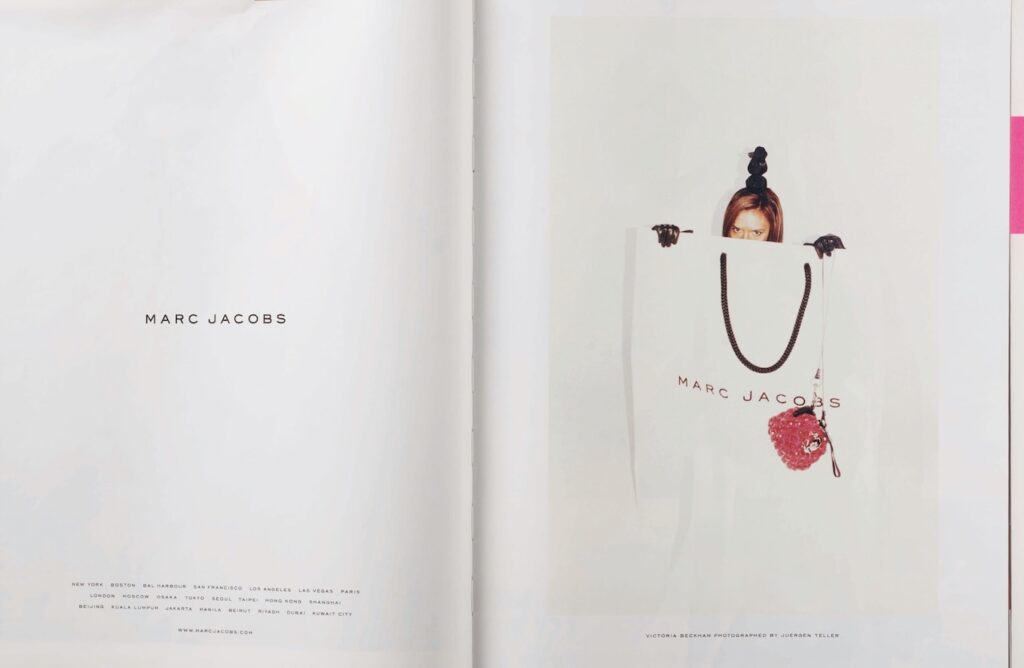Ads have changed massively since their inception in 1930. It has been forced to evolve as industries themselves evolved, and audiences became smarter and immune to their previously striking charm. A cultural shift for sure.
So let’s have a bit of a reflection on some of the major changes experienced by this industry. Because whether we like it or not, ads are all around us. And they will continue to be all around us, constantly playing catch up with us.
Advertising: From art form to dirty word, a cultural shift
Designer turned artist Helmut Lang said he never saw his marketing campaigns strictly as advertising, “It was just another dimension of the work,”. A stark contrast with today, advertising has practically become a dirty word, something to avoid. Product placement, for example, for many is considered obvious and laughable. A great cultural shift due to the fact that consumers have become a lot savvier when it comes to spotting these marketing schemes. Simply put, consumers don’t really get down with buying something simply because someone they might know or admire has been paid to promote it on their Instagram. Which they will know, partly due to the evolution of the legal framework around marketing which now dictates all paid promotions must be disclosed on social media, and partly due to the aforementioned improved savviness. Inversely, in the past, it was an incredibly effective tool for marketing. Remember the famous scene that features Reese’s Piece in ET? Well, it resulted in the company boosting its sales somewhere between 65% and 85%. Talk about a cultural shift

That’s not to say that product placement and general marketing don’t work anymore, they simply need a different approach in order to be effective. While it can of course be an artful campaign or a creatively ingenious ad, today it’s quite clear that advertising has one reigning end purpose alone (when it comes to products, services, or raising funds of any kind), and that is to sell. Therefore you won’t convince anyone by saying that the overall goal of a marketing campaign is to explore creative expression. Nowadays you can’t take consumers for fools, and honesty and transparency are the best policy.
Shorter attention spans have transformed campaign strategy
Perhaps, in the past a campaign strategy could afford to be a hell of a lot more reflective. It could take longer to ideate and design because consumers would take longer to digest it. The impact of campaign strategy and the ads it entailed was probably longer lasting, reverberating through the collective creative and social conscience rather than being immediately pushed out and replaced by the next stimulating piece of content. Flicked away not two seconds after appearing before the consumer.

Nowadays if something isn’t understood within the first… what like… minute? of entering the consumer’s field of vision, chances are it won’t be processed at all, and your campaign strategy thus fails. On the one hand, we could think of this as a serious limitation to what you can achieve with an ad, you have to be a lot more ‘in your face’. Try to be smart and subtle and you risk seriously not hitting the mark. On the other, it might simply mean that the methodology of a campaign strategy has evolved as an art form and it is equally as impressive to be able to have an impact in 2 to 20 seconds than in 2 to 20 minutes.
Not to mention technology and what it has meant for creative campaigns and the advertising industry
And we’re not only talking about the interactive 3D billboard at Times Square and the ridiculously astonishing ads it can run as well as the subsequent impact these can have, literally stopping people on their feet. We’re talking about how advertising innovation and technology have translated into the industry completely evolving. Creative campaigns at their finest. Engaging with the customer rather than simply throwing things at it. Ultimately transforming the relationship from unidirectional to bidirectional or omnidirectional. Meaning ads no longer consist of businesses saying something to consumers and that’s it. The relationships with audiences are now curated and nurtured, with customers having their say in it too.
From social media to events, to games, and many other methods of communication and advertising, there’s a new king in advertising that rules over the audience’s purchasing behaviour. Value.
Don’t be explicit, create value
Advertising went from explicitly selling something to creating brand awareness and problem-solving. What problems did the consumer have? How could the brand in question help? This was one of the biggest shifts in advertising which was appreciated as the industry expanded to the online space. Even so, this modus operandi was shaken up once again with the rise of all things mobile. A technology-educated society sees through the problem-solving method, it now seeks value.
That’s where the challenge lies today. The more people don’t see your content as an ad, the more effective it will be. But the more audiences feel like you’re trying to pass an advert as legitimate content, the less they will trust you and the less impact it will have, at least positively. Nowadays you can’t trick consumers into making a purchase, at least not as easy as one would in the past. Today, you need to first offer real value, and then the consumer will come to you, which happens to be a concept that more traditional businesses still have a hard time getting their head around. If you think about it, a marketing agency using an informative blog with genuinely valuable tips as a marketing strategy rather than as an access people have to pay for is the same thing as an ice-cream brand offering free samples at the beach.
So there you have it, create honest and transparent value that’s easily consumable and impactful. Also this goes without saying, but be culturally and socially sensitive. We all saw what happened to Pepsi after the infamous Kendall Jenner advertisement.













